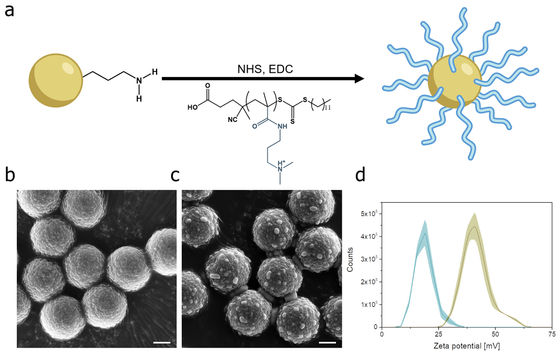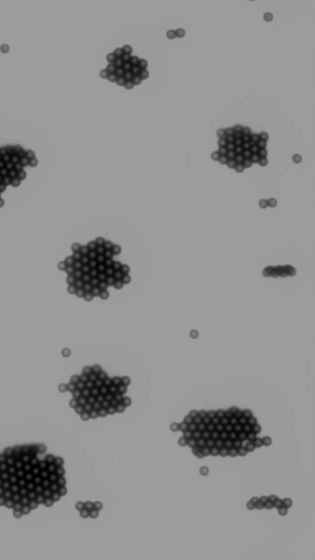A new microrobot that can catch all the microplastics and bacteria in the water at once

by
Microplastics are known to enter the human body through various routes, such as through air and drinking water , and they pose a serious threat to ecosystems and public health, especially when the water in the ocean or water sources is contaminated by both microplastics and pathogens, making the purification process more complicated and difficult. A microrobot capable of swarming and capturing such microplastics and collecting them together with a magnet has been announced.
Magnetic Microrobot Swarms with Polymeric Hands Catching Bacteria and Microplastics in Water | ACS Nano
https://pubs.acs.org/doi/10.1021/acsnano.4c02115
Swarms of miniature robots clean up microplass | EurekAlert!
https://www.eurekalert.org/news-releases/1043380
Microrobots Swarm the Seas, Capturing Microplastics and Bacteria [Video]
https://scitechdaily.com/microrobots-swarm-the-seas-capturing-microplastics-and-bacteria-video/
The following movie shows how a microrobot developed by a research team at the Central European University of Technology in the Czech Republic purifying contaminated water.
Water-cleaning beads grab microplastics and bacteria | Headline Science - YouTube
This is a microrobot. It looks rod-shaped because it is made up of multiple small microrobots that have been combined into a plate-like structure when viewed from the side.

The microrobot is made up of

When exposed to

When contaminant particles approached the mass of microrobots rotating in a magnetic field, they were sucked in and captured by the microrobots.

To test the performance of the microrobot, the team placed 1-micrometer-diameter fluorescent polyethylene particles and cultured Pseudomonas aeruginosa bacteria in an aquarium to recreate water contaminated with microplastics and bacteria. Pseudomonas aeruginosa is known to cause infectious diseases such as pneumonia, and is known to be difficult to remove with chemicals because it has strong drug resistance to disinfectants and antibiotics.
The team placed the microrobot in a tank of microplastics and bacteria, then treated it for 30 minutes by turning a rotating magnetic field on and off every 10 seconds.
The researchers found that both the microplastics and bacteria were firmly attached to the surface of the microrobot, and that after 30 minutes the fluorescent polyethylene particles had almost disappeared from the water. They also found that when the microrobot was placed in the water at the highest concentration tested, 7.5 mg per milliliter of water, it was able to capture 80% of the Pseudomonas aeruginosa bacteria in the water.

The microrobots that have captured the pollutants can be retrieved from the water using a magnet, and if they are cleaned and sterilized with ultrasound and ultraviolet light, they can be reused, although their capturing power will decrease.
'A swarm of mobile microrobots can rapidly capture swimming bacteria and scattered microplastics in the water, thereby purifying the aquatic environment. Unlike conventional methods, the microrobots can also be recovered from complex media and efficiently reused by releasing the pollutants elsewhere,' the team wrote in their paper.
Related Posts:







